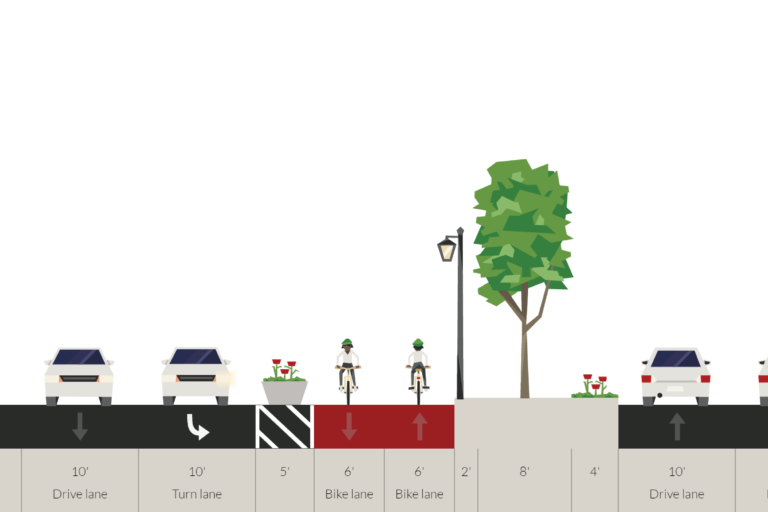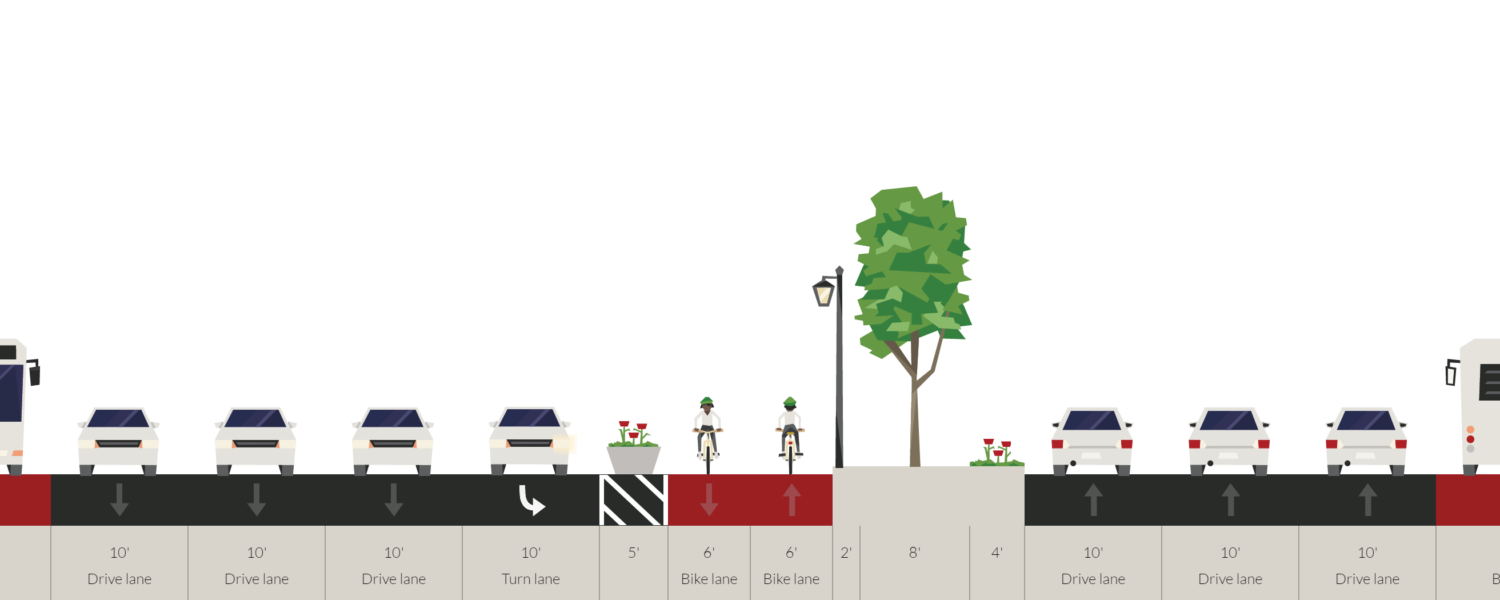Route 123 and bikes don’t mix well. The road might be posted 35 mph, but because of the overbuilt (some might say stroad-like) qualities of the road, many motorists routinely go above 55 mph. Such conditions necessitate two attack fronts if pedestrian/cyclist conditions are to be improved. Step one, calming traffic and providing the appropriate road vocabulary and visual cues for a road intended to be 35 mph. Step two, provide Tysons first protected bike lane in a way that can coexist with the arterial nature of Route 123.
In general, bike lanes down the center of a road is not a preferred design. Center bike lanes mean that bikes have to cross over to the center when coming from side roads, which can put bikes at risk against both u-turners and left turners and puts cyclists nearest to the colloquial fast lane. However, center bike lanes can work. One such example is the Pennsylvania Avenue bike lanes in D.C., which features center two-way lanes with semi-protected edges.

The reason this particular bike lane works is that left turns have been limited at locations, u-turns are illegal, and some protection is provided. In D.C. those elements alone have kept the bike lanes relatively safe, however the design would likely be insufficient for use in Tysons.
What Route 123 looks like today (using Streetmix)
What could work in Tysons would be to provide the same signalling (left turn on green arrow only) with beefed-up protection controls. This would avoid the big problem that occurs between bike and highway on-ramp conflicts at several locations. Between McLean Station and Tysons Corner Station there are double left turn lanes, which are wildly underused and likely unnecessary. Removing the inner most left turn from each direction would provide back 24 feet of right of way. A further reduction in vehicle right of way should occur by reducing the oversized 12 foot traffic lanes (inappropriate for 35 mph roadways) to 10 feet. This would provide an additional 8 feet in each direction, for a total of 40 feet of recaptured space, without any reduction in thru-flow lanes.
What Route 123 could look like with protected bike lanes (using Streetmix)
Good infrastructure retrofit projects take aim at multiple overlapping issues with efficient solutions. Stretches of 123 have long suffered from both a lack of nighttime lighting and daytime shade elements. The optimal center road bike lane design should include lighting, to aid visibility between drivers and cyclists at intersections, as well as some canopy trees to reduce both the surface temperatures of the bike lanes and the overall heat island effect throughout the city.
There can also be beauty in safe design. Lane protection/buffering could come from bollards or planter boxes along more constrained edges, such as where left turns occur. Other than the addition of plantings and lighting, the cost is relegated to a couple of miles of protective curbing, bollards or even jersey barriers (of which VDOT and Fairfax likely have extras from other construction projects). There would, of course, be re-striping costs, but this could be aligned with the normal re-striping/maintenance schedule for Route 123 to minimize any added cost.
The end result of this would be a very usable, comfortable and safe arterial bike lane that will help people get from Tysons East to & from Central Tysons. It would also provide a much needed road diet and promote traffic calming, which will make Route 123 more appropriate for its designated speed limit, and make the corridor less prone to accidents.



